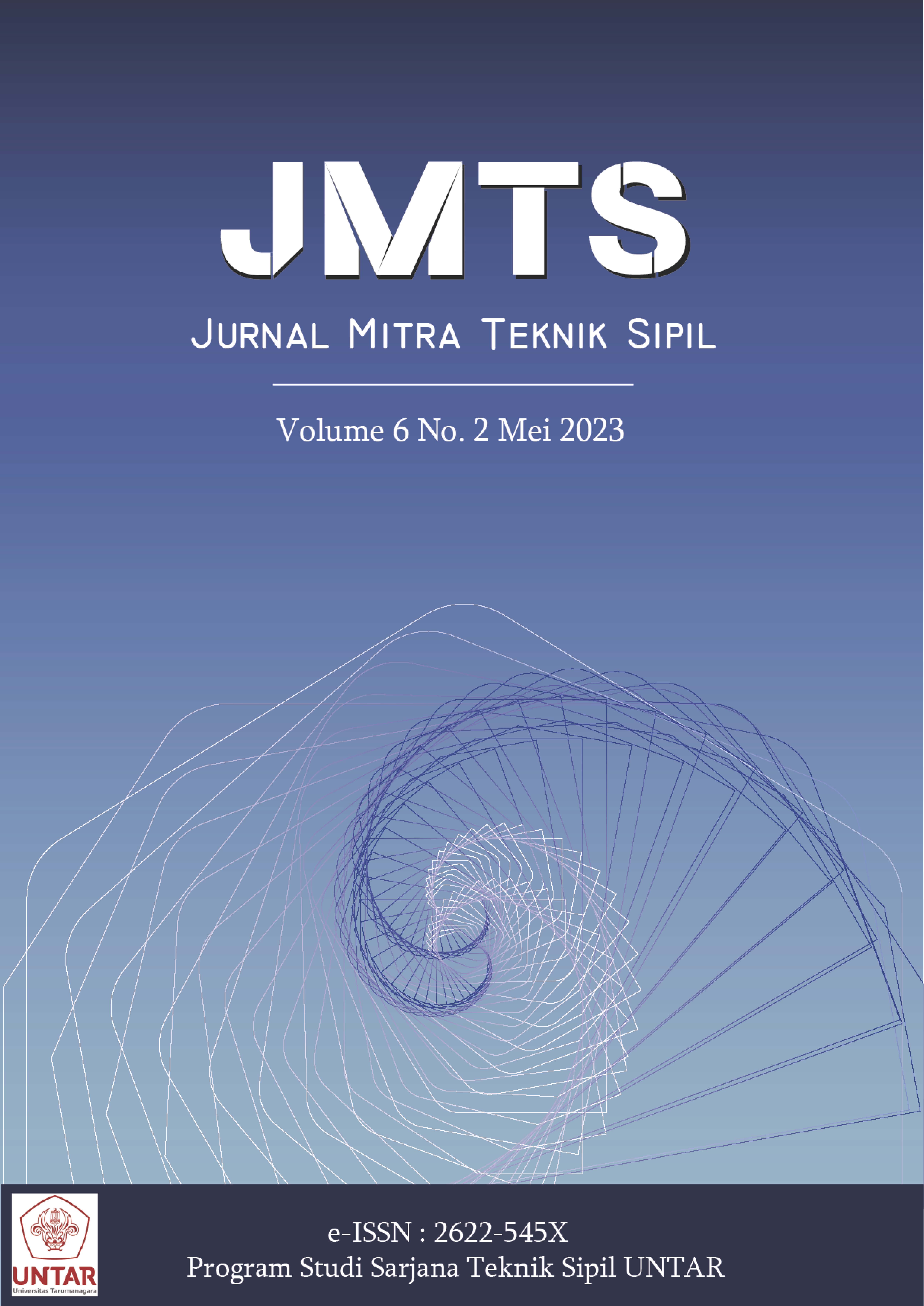PERINGKAT DAN FAKTOR PENYEBAB WASTE MATERIAL PADA PROYEK X DI SERPONG
Isi Artikel Utama
Abstrak
Waste material is material that is not used in processing or application. Waste material is a major concern in current construction projects, because every construction project will certainly cause material waste. The purpose of this study was to determine the ranking and the factors causing the remaining material in project X. The method used in collecting data was by distributing questionnaires, direct field observations, and interviewing construction workers. The research data obtained are the Budget Plan (RAB), the Implementation Budget Plan (RAP). The analysis was carried out by processing primary data in the form of a questionnaire by applying validity and reliability tests, and continued by using the Relative Importance Index (RII) method so that a ranking of the factors causing the material waste was obtained, while from the RAB and RAP data the waste material was ranked based on cost. From the calculation results, it is obtained that the largest waste material is Concrete Steel D-10 mm X 12 m of 15.74% of the total waste value, and the most influential factor in causing waste is the residue factor with indicators of material cutting residue that is no longer used, with an RII value of 0.8667. From the results of the field survey, it was found that one way to minimize the occurrence of waste material is to collect material in different shelters according to the material, so that it can be easily used if needed.
Abstrak
Waste material adalah material yang tidak terpakai dalam pengerjaan atau penerapan. Waste material merupakan perhatian utama di dalam proyek konstruksi sekarang, karena setiap proyek konstruksi tentu akan menimbulkan sisa material. Tujuan dari penelitian ini ialah untuk mengetahui peringkat dan faktor-faktor penyebab sisa material pada proyek X. Metode yang digunakan dalam pengumpulan data ialah dengan cara pembagian kuesioner, observasi langsung dilapangan, dan wawancara para pelaku konstruksi. Data penelitian yang diperoleh ialah Rencana Anggaran Biaya (RAB), Rencana Anggaran Pelaksanaan (RAP). Analisis dilaksanakan dengan mengolah data primer berbentuk angket dengan mengaplikasikan uji validitas dan uji reliabilitas, dan dilanjutkan dengan menggunakan metode Relative Importance Index (RII) sehingga didapatkan peringkat faktor penyebab waste material, sedangkan dari data RAB dan RAP didapatkan peringkat waste material berdasarkan biaya. Dari hasil perhitungan, didapatkan waste material terbesar adalah Besi Beton D-10 mm X 12 m sebesar 15.74% dari total nilai waste, dan faktor paling berpengaruh dalam menyebabkan waste ialah faktor residu dengan indikator sisa pemotongan material yang tidak terpakai lagi, dengan nilai RII sebesar 0.8667. Dari hasil survei lapangan didapat salah satu cara meminimalisir terjadinya waste material ialah mengumpulkan material pada tempat penampungan yang dibedakan sesuai dengan materialnya, sehingga dapat dan mudah digunakan jika diperlukan.
Rincian Artikel

Artikel ini berlisensiCreative Commons Attribution-NonCommercial-ShareAlike 4.0 International License.
This work is licensed under Jurnal Mitra Teknik Sipil (JMTS) Creative Commons Attribution-ShareAlike 4.0 International License.Referensi
Alwi, S., Hampson, K. D., & Mohamed, S. A. (2002). Waste in Indonesian Construction Projects. 1st International Conference of CIB W107 - Creating a Sustainable Construction Industry in Developing Countries, 11-13 November 2002, South Africa, ISBN: 0-7988-5544-4, pp. 305-315
Formoso, C. T., Isatto, E. L., & Hirota, E. H. (1999). Method for Waste Control in the Building Industry. Proceedings of the 7th Annual Conference of the IGLC, 325–334.
Garas, G. L., Anis, A. R., & Gammal, A. E. (2001). Materials Waste in the Egyptian Construction Industry. Proceedings of the 9th Annual Conference of the IGLC, 1–8.
Gavilan, R. M. & Bernold, L. E. (1994). Source evaluation of solid waste in Building construction. Construction Engineering and Manajement.
George, R. (1994). Total Construction Preject Management. McGraw – Hill, Inc.
Maharani, A. S. A., & Alexander, H. B. (2022, March 3). Sejauh Mana Kualitas Gedung Bertingkat dan Pencakar Langit di Indonesia. https://www.kompas.com/properti/read/2022/03/03/203000421/sejauh-mana-kualitas-gedung-bertingkat-dan-pencakar-langit-di-indonesia?page=all.



